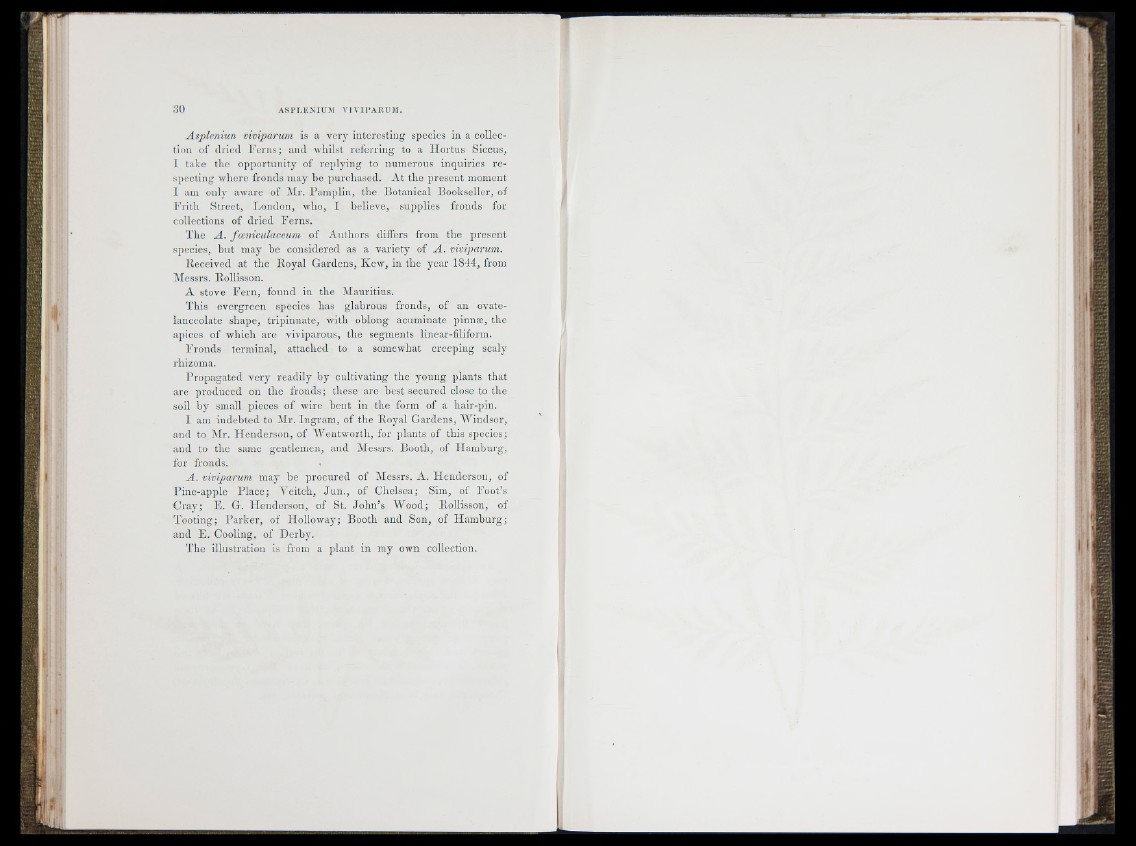
Asple.niun tnmparum is a very interesting siiecics in a collection
of (liied Ferns; and wliilst referring to a Ilortus Siccus,
I take the oiqiortunity of reiilying to numerous inquiries re-
siiccting whore fronds may be tiurchased. At the present moment
I am only aware of IMr. I’amplin, the Botanical Bookseller, of
Frith Street, London, who, I believe, supplies fronds for
collections of dried Ferns.
The A . foeniculacemn of Authors differs from the present
species, but may be considered as a variety of A , tiviparum.
lleceived at the Royal Gardens, Kew, in the year 1844, from
Messrs. llollisson.
A stove Fern, found in the Mauritius.
Tills evergreen species has glabrous fronds, of an ovate-
lanceolate shape, tripinnate, with oblong acuminate pinnæ, the
apices of which arc viviparous, the segments linear-filiform.
Fronds terminal, attached to a somewhat creeping scaly
rhizoma.
Fropagated very readily by cultivating the young plants that
are produced on the fronds; these are best secured close to the
soil by small pieces of wire bent in the form of a hair-pin.
I am indebted to ]Mr. Ingram, of the Royal Gardens, IVindsor,
and to i\[r. Henderson, of Wentworth, for plants of this species;
and to the same gentlemen, and Messrs. Booth, of Hamburg,
for fronds.
A . viDtpamm may be procured of Messrs. A. Henderson, of
Pine-apple Place; Veitch, Jun., of Chelsea; Sim, of Foot’s
Cray; E. G. Flenderson, of St. John’s Wood; Rollisson, of
Tooting; Parker, of Holloway; Booth and Son, of Hamburg;
and E. Cooling, of Derby.
The illustration is from a plant in my own collection.